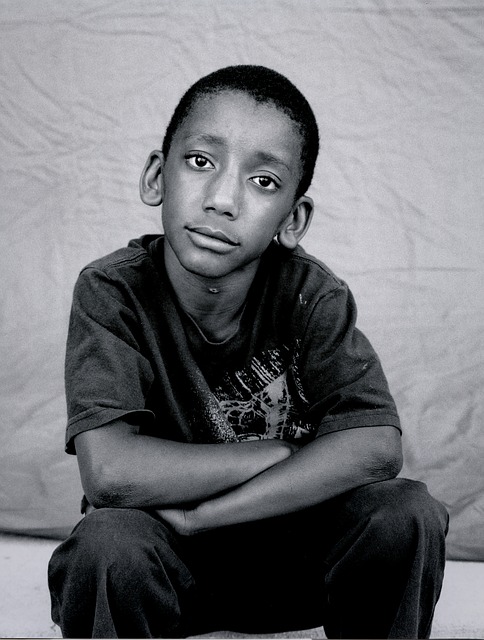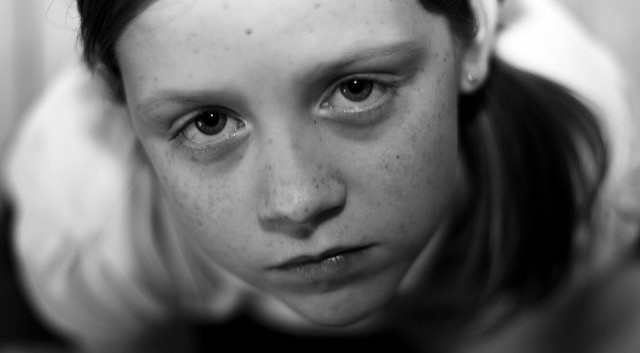How Mercy Home Makes Mental Health A Priority
Mercy Home for Boys & Girls offers a variety of mental health resources to support the wellbeing of our young...
April 22, 2025
February 18, 2016
By the end of the day today, at least five children will die from abuse.
This is the current tragic state of child abuse in our country. Over 3.6 million referrals of child abuse are reported each year, and our youngest boys and girls are the ones most likely to suffer. Something needs to be done to end these tragedies.
Day after day, that average number contributes to 1,820 children who will die of abuse and neglect across the United States. Over 60 percent of those children who will die are under the age of three.
In the past year, at least 1 in 7 children have experienced child abuse and/or neglect, and this is likely an underestimate.
This is the current tragic state of child abuse in our country. Over 4.4 million referrals of child abuse are reported each year, and our youngest boys and girls are the ones most likely to suffer. Something needs to be done to end these tragedies.
You may not be a parent or work with children, but chances are that you are a part of a child’s caregiving system. Our own Mercy Model of Care defines caregivers as any adult who provides paid or unpaid support and assistance to a child’s physical, psychological, or developmental needs. If you spend time with a niece, nephew, or a child of a family friend, you are a part of that child’s caregiver system, and it is your responsibility to ensure they are protected from maltreatment. Only with your help can we put a stop to child abuse.
Now that you understand the terrible impact of child maltreatment, you may probably feel ready to go out and prevent abuse from affecting the lives of innocent children. Before you do, however, it is important you have a clear understanding of the best methods of how to recognize and prevent child maltreatment. It’s not always easy to spot signs for all forms of abuse, and having a working knowledge of the subject matter will ensure you are able to recognize and respond to signs before it’s too late.
Below you will find a comprehensive overview of of the information you need to know in order to effectively identify and prevent child maltreatment. You will find answers to important questions such as “What is the definition of child maltreatment?” “Where can you go to get help for a child with abuse?” “What are signs of child emotional abuse in adults?” By the time you finish this article, not only will you be able to explain how to recognize signs of abuse and neglect, but you will be able to help others to join the mission in ending the trauma and suffering of hundreds of thousands of boys and girls across the country.
The Center for Disease Control and Prevention (CDC) refers to abuse as child maltreatment, which is “any act or series of acts of commission or omission by a parent or other caregiver…that results in harm, potential for harm, or threat of harm to a child.” Put simply, you should not wait to see signs of abuse before notifying proper authorities–if you notice signs that a child’s safety or well-being could or is in danger, go to the authorities immediately.
Beyond this general definition, the CDC further explains two types of maltreatment:
These are “words or overt actions that cause harm, potential harm, or threat of harm.” While acts of commission are defined as being deliberate and intentional, harm to a child might not always be the desired motive or consequence. The intention of the act only applies to caregiver actions (those who are responsible for a child’s care), rather than the result, or consequence of those actions. For instance, a caregiver might purposefully hit a child as punishment, but may not intend to break the child’s arm.
There are three types of acts of commission as defined by the Children’s Bureau—
These acts are “the failure to provide for a child’s basic physical emotional, or educational needs or to protect a child from harm or potential harm.” Similar to acts of commission, a caregiver may not always intend to cause harm or injury to the child.
Acts of omission can be broken down into the following:
The U.S. Department of Health and Human Services, Children’s Bureau identify general signs of child maltreatment observable in a child, as well as key signs recognizable in an adult. Many of those below are especially useful signs of child abuse for educators to recognize in a school setting.

A child may be suffering from physical maltreatment if:
Consider the possibility of sexual abuse if:

Psychological abuse, which is “usually present when other types of maltreatment are identified,” may be occurring if:
The above may not cover all warning signs of child maltreatment, and as you may notice, some identifying signs of abuse and neglect overlap. It is necessary to also pay attention to other unusual or concerning behavioral signs when interacting with a child. Only through close observation will you be able pick out less obvious signs of child abuse and neglect.
Once you are able to tell signs of child maltreatment and you suspect a child may be suffering, take action. Don’t wait–doing so could could mean the difference between life and death.
If you suspect a child is experiencing some form of maltreatment, call or text Childhelp National Child Abuse Hotline at (800) 422-4453, available 24/7.
Lastly, and just as importantly, spread awareness about signs of child abuse and what to do. The more people learn how to recognize the signs of child abuse, the better chance we have of saving the lives of tens of thousands of children.
Photo Credits:Martin Walls; Patrik Nygren; Anthony Kelly
Mercy Home for Boys & Girls offers a variety of mental health resources to support the wellbeing of our young...
April 22, 2025
By understanding child abuse and neglect, you can spread awareness about the issue and prevent child abuse from happening in...
April 8, 2025
Though difficult to talk about, suicide is a growing public health problem in the United States. It is also one...
October 5, 2022
Comments